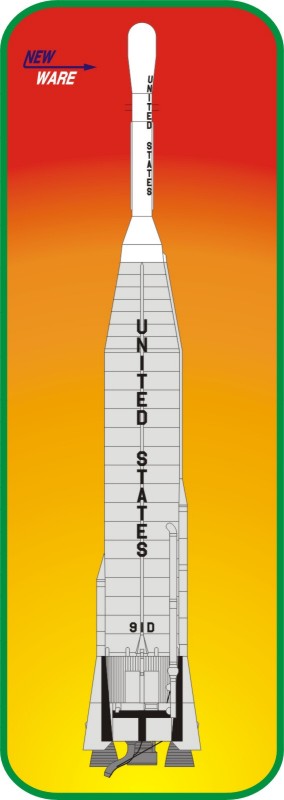 NW029 1/144 Atlas Able - Pioneer P-31 lunar
satellite LV
NW029 1/144 Atlas Able - Pioneer P-31 lunar
satellite LV NW029 1/144 Atlas Able - Pioneer P-31 lunar
satellite LV
NW029 1/144 Atlas Able - Pioneer P-31 lunar
satellite LV

In 1955 Convair won the prime contract for Atlas ICBM.The
liquid oxygen and kerosene vehicle was designed to carry a
thermonuclear warhead over 7000 miles. The Atlas was unique in
its “stage and half” design in which two of its main engines
were shed to reduce weight after two minutes of flight, while the
central sustainer continued to burn. In order to minimize
sustainer tank weight (used also for booster engines), Convair
employeed balloon construction. Flights of Atlas began on June
11, 1957, with the launch of Atlas A powered by booster alone. In
November 1958, an Atlas B reached full design range, and the
operational Atlas D was deployed in 1960.
Atlas Able was based on combination of Atlas booster and upper
stages from a Vanguard launch vehicle (second stage was liquid
fueled AJ 10, topped by the X248 solid fueled third stage). The
goal was to send Pioneer probe into lunar orbit. Pioneer probe
was a small sphere with four solar panels. A small injection
rocket on top of the probe would slow it into lunar orbit. 3
Atlas Ables were launched with no success. Pioneer P-31 was
launched on December 15th, 1960. All worked well until T+68
seconds into the flight when the second stage ignited three
minutes early, while still atttached to the Atlas. This resulted
in a fireball that destroyed the entire vehicle.

Photo of NW029 kit parts. Detail photos of some parts can be found on special page.